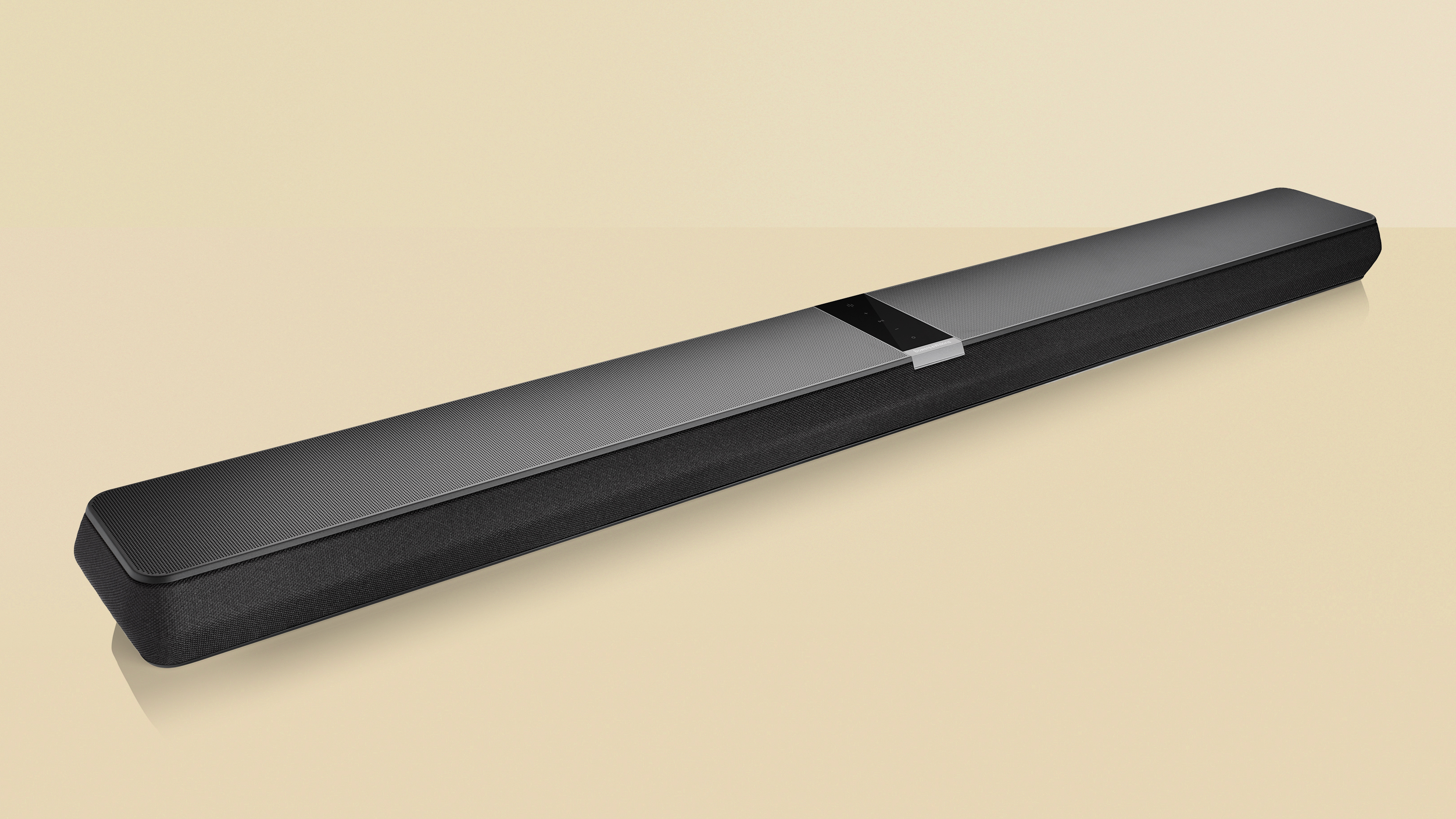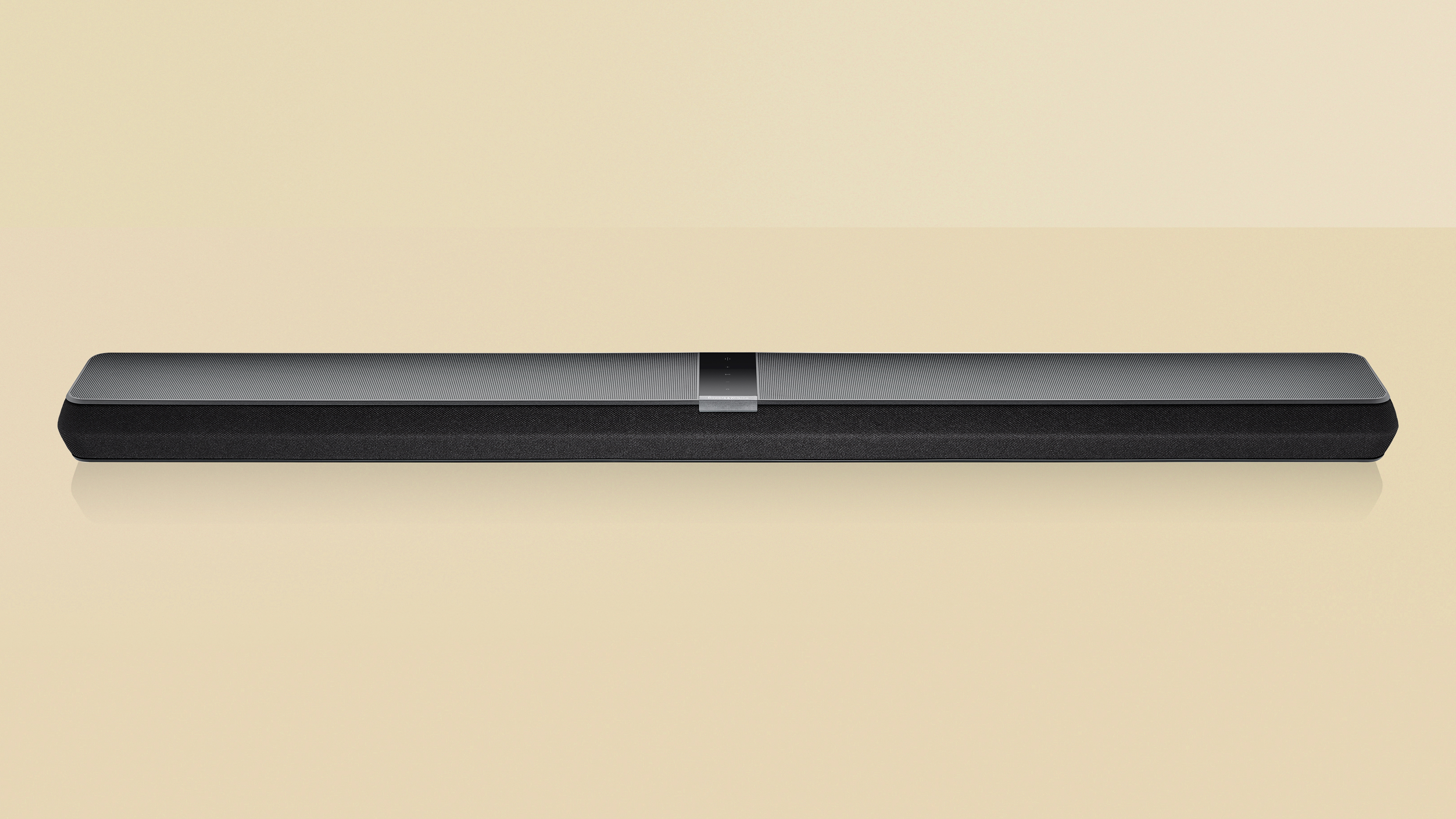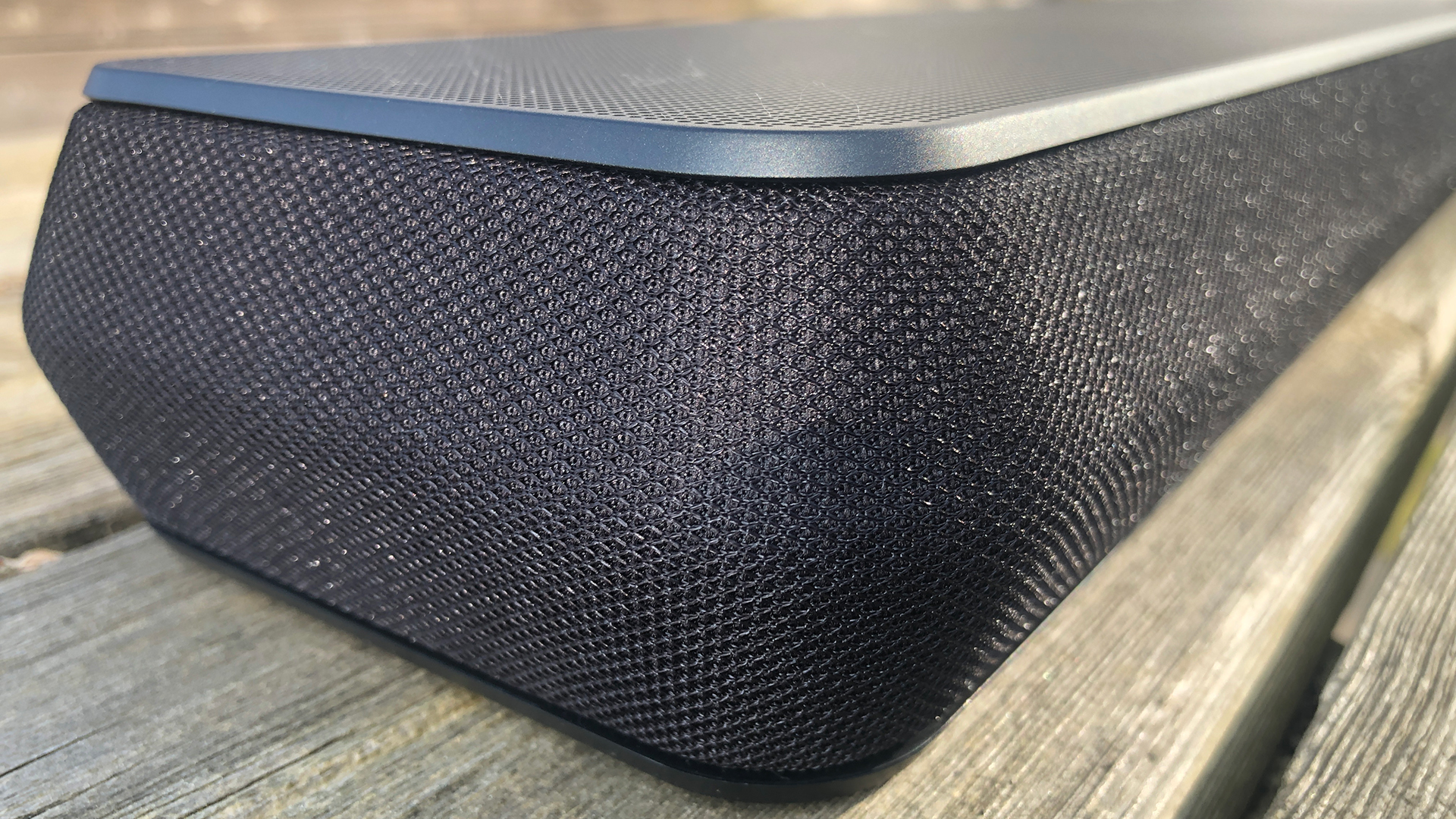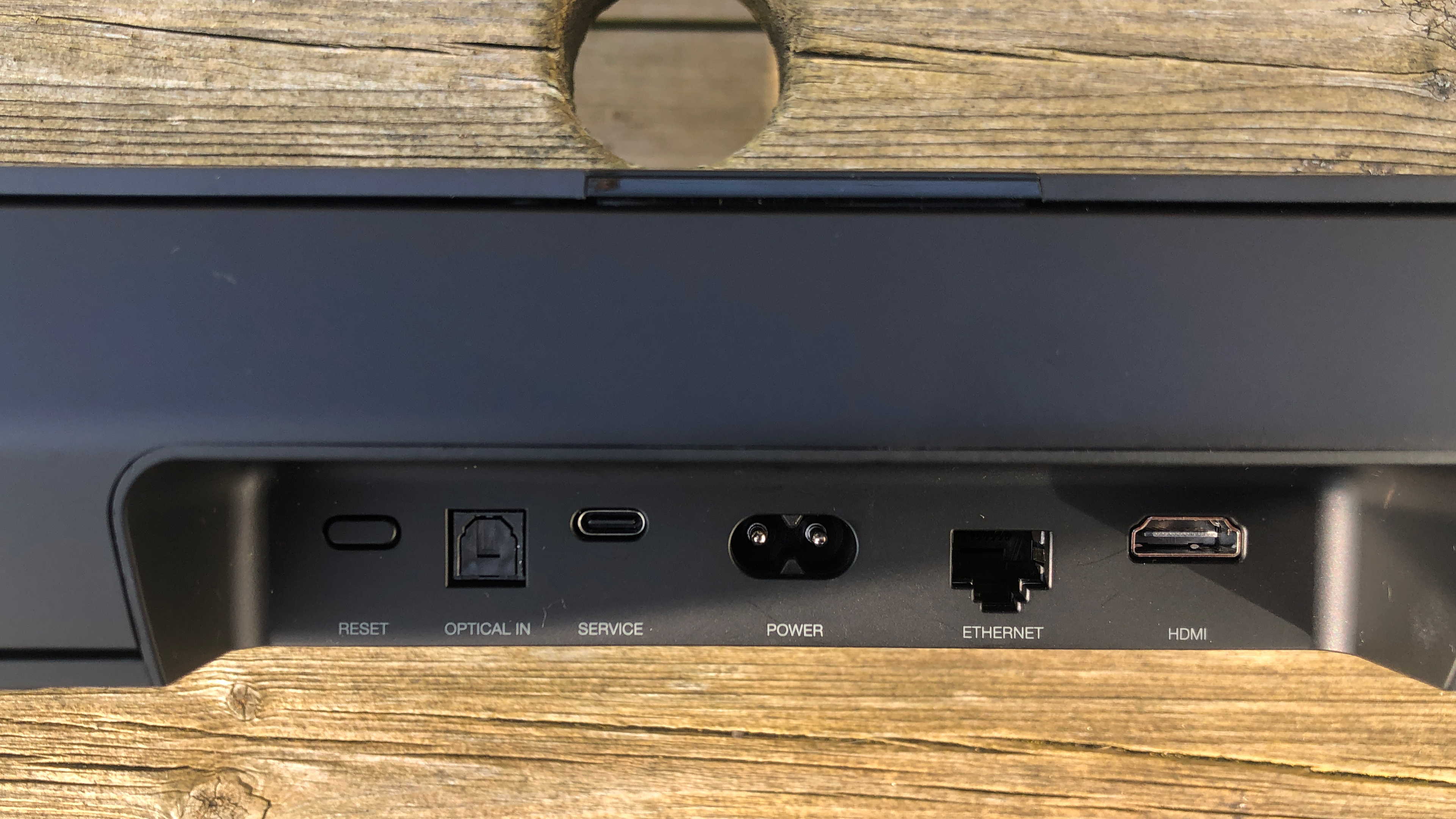Bowers & Wilkins Panorama 3 review: a great soundbar for TV and music
The Panorama 3 finally delivers the impressive Dolby Atmos sound the hi-fi legend has always promised – and it's ideal for music fans too


The Bowers & Wilkins Panorama 3 has much more than most soundbars to recommend it, but you'll need to temper your Dolby Atmos expectations slightly. It delivers all the scale and punch you could want from a one-box soundbar, and is the best bar for music at this price, but it can't give quite the same 3D overhead effect as some others.
-
+
Full-blooded, confident and absorbing movie sound
-
+
Dextrous and convincing with music
-
+
Ample control options
-
-
Doesn’t quite scale the Dolby Atmos heights
-
-
No wireless surround option
-
-
No HDMI passthrough
Why you can trust T3

The Bowers & Wilkins Panorama 3 finally fills in what has been, relatively speaking, a Bowers & Wilkins blind spot. Where wireless speakers, headphones and, of course, traditional loudspeakers are concerned, the company’s reputation is basically impeccable – but where soundbars are concerned, it’s tended to fall a little short.
In this Bowers & Wilkins Panorama 3 review, we're looking at the product that breaks this particular cycle. As the name suggests, it's the third Panorama soundbar, with the first having launched in 2009 – but it's the first to seriously trouble our list of the best soundbars.
With an impressive speaker array for Dolby Atmos sound, no need for an external subwoofer, and wireless audio credentials, it’s got the specification and the price-tag to go up against the ultra-popular Sonos Arc – and with the hardcore hi-fi credibility to teach the Arc a thing or two.
It turns out to be a seriously impressive bit of kit that bests the competition in some areas, but falls a little short in a few other areas – but that might make it the balance you're looking for. Here's what we thought.
B&W Panorama 3 review: price & release date
The Bowers & Wilkins Panorama 3 was released in March 2022. In the United Kingdom you’ll have to part with £899 to secure one, while in America you’ll be handing over $999. Australian customers, meanwhile, are looking at AU$1599.
This is by no means the priciest Dolby Atmos soundbar around – not even the priciest single-box soundbar. The Bang & Olufsen Beosound Stage and Sony HT-A7000 both cost a good chunk more.
But it’s still fairly premium, and the price is right in Sonos Arc territory, which has been a huge hit for a reason. No pressure, then…
Get all the latest news, reviews, deals and buying guides on gorgeous tech, home and active products from the T3 experts

The Panorama 3 is wide – it's only good for TVs 55 inches and up, really.
B&W Panorama 3 review: features & what's new
The Dolby Atmos-enabled soundbar is nothing new, of course – but it’s new to Bowers & Wilkins. And given that you only get one chance to make a first impression, the company hasn’t held back where features and specifications are concerned.
Rather than relying on digital sound processing to achieve a sensation of Dolby Atmos-style sonic height, the Panorama 3 is fitted with a pair of up-firing 50mm Elevation drivers designed to reflect sound off the ceiling. Also (just about) visible through the perforations on the top of the soundbar are a couple of 100mm subwoofers – they’re charged with bringing all the low-end presence your average Hollywood soundtrack relies heavily on, and they make use of the majority of Panorama 3’s internal volume.
The left, right and centre channels are arranged across the front of the soundbar, behind some nicely applied wraparound acoustic material. Each channel features a 19mm decoupled titanium-dome tweeter and two 50mm midrange drivers, and together they form the ‘3’ of the soundbar’s 3.1.2-channel configuration.
This complement of drivers is powered by a total of 400 watts of Class D amplification. Each pair of 50mm midrange drivers splits 40 watts between them, while every other driver gets 40 watts of its own.
In terms of getting information on board the Panorama 3 in the first place, there are both wired and wireless options. In a little recessed rear panel you’ll find an HDMI input (just the one, mind you, because for some reason Bowers & Wilkins – like Sonos – seems to think HDMI passthrough is some kind of bourgeois affectation, rather than a practical necessity in many cases), digital optical input and ethernet socket, along with an input for power, a USB-C socket for service updates and a ‘reset’ button.
Wireless connectivity, meanwhile, runs to Apple AirPlay 2 and Spotify Connect over Wi-Fi, plus Bluetooth with aptX Adaptive compatibility.
There's no support for any kind of wireless rear speakers to add true surround sound – a lot of people won't mind this one bit, but it does mean that what you're getting here is the maximum amount of immersion it has to offer. You can't add more channels later, unlike the Sonos Arc.

The Panorama 3's fabric hides the array of drivers, and looks smart in a living room.
B&W Panorama 3 review: performance
It won’t come as any great surprise to learn a Dolby Atmos soundbar does its best work when given a Dolby Atmos soundtrack to deal with. So if you do the right thing by your Bowers & Wilkins Panorama 3, the resulting sound is almost entirely admirable.
Certainly there’s a commonality of tone here that’s by no means a given in speakers with so many driver units doing so many different things. The top of the frequency range is expertly judged here, combining necessary crunch and bite with speed and substance, and at the opposite end Panorama 3 is similarly substantial and similarly swift. Bass sounds are properly varied in terms of tone and timbre, and they’re controlled so well that the ‘start’ and ‘stop’ of individual sounds is brilliantly straight-edged.
And despite the smooth integration from the top to the bottom of the frequency range, both bass and treble information keeps well out of the way of the midrange. Which means it’s free to get on with communicating all the nuance and all of the detail your favourite soundtracks feature. Dialogue, in particular, projects forward well, which makes even murky or overdriven speechifying easy to follow.
But for all its precision, control and organisation, Panorama 3 is more than capable of kicking right off if the soundtrack demands it. There’s real dynamic power here, and the soundbar can switch from ‘near-silence’ to ‘enormous earth-shattering explosion’ and back again in an eye-blink. It’s equally adept with the second-stage dynamics of overlapping speech, revving engines or anything else that carries minor harmonic variations within it.
As far as the width, depth and coherence of the soundstage the Bowers & Wilkins describes, there’s nothing to take issue with. The soundbar is able to shift effects from right to left or front to back with real confidence, and can distribute sound far wider than the actual cabinet itself.
Shortcomings, such as they are, concern the way Panorama 3 deals with the important ‘height’ element of a Dolby Atmos soundtrack. It’s just slightly tentative and, consequently, just slightly underwhelming. No one’s expecting their mid-range soundbar to compete with something like Sennheiser’s Ambeo in this regard, of course – but if Bowers & Wilkins was hoping to steal a march on the Sonos Arc that's surely its benchmark at this price, well, it hasn’t quite managed it.
Switch to some music instead of movies, though, and if anything Panorama 3 is even more impressive. We were primed to expect good movie performance from a Bowers & Wilkins soundbar costing proper money, of course – but products of this type can quite often fall down quite badly when asked to perform as a music speaker.
But all of the assurance, all of the authority and all of the winning tonal unity Panorama 3 demonstrates with movies is carried over to the way it handles music. And there’s a positivity to the way this soundbar expresses rhythms and manages tempos that is, frankly, not a given even in dedicated music speakers. For those who want their soundbar to be a living room speaker that does everything, it's ideal.

The Panorama 3's ports are in a recess on the back – it's a shame there's no HDMI passthrough.
B&W Panorama 3 review: design & usability
How much ‘design’ do you want your new soundbar to have undergone? Exactly. So Panorama looks just as it ought to. At 1,210mm wide it needs a biggish TV to sit under – consider 55 inches to be the minimum. Still, at just 65mm high it should be able to sit comfortably beneath most TVs without getting in the way of the actual screen. And if you want to hang it on the wall (there’s a very useful bracket supplied), its tidy 140mm depth means it isn’t going to turn it into a shelf.
Do bear in mind, though, that Panorama 3 has upward-firing drivers positioned on its top panel. Which means they need space and, ideally, uninterrupted line of sight to your ceiling in order to do their thing.
The Bowers & Wilkins is built from a combination of sturdy, creak-free plastics (perforated on the top in order to let the drivers do their thing) and acoustic cloth. As you might expect given a) the brand and b) the price, everything is put together perfectly and feels built to last.
As far as taking control goes, you’ve a number of options. Attach the soundbar to your TV using ARC or eARC and you can use your television’s remote control to adjust volume. Amazon Alexa voice-control is available too, and it’s very nicely implemented.
There are a few capacitive touch-controls on the top panel, which use a proximity sensor to wake up and illuminate. Or there’s the Bowers & Wilkins control app, which in this instance lets you adjust volume, trim ‘bass’ and ‘treble’ EQ levels, and integrate your favourite music streaming services and internet radio providers.
And in time, says Bowers & Wilkins, you’ll be able to use the app to set up a multi-room system with other Panorama, Zeppelin or Formation products from the company’s ranges. At the moment, any multi-room use will have to come from Apple AirPlay or Spotify connect.
B&W Panorama 3 review: verdict
Obviously the Sonos Arc is the product Panorama 3 needs to beat – and in some ways it does just that. This is a considerably more enjoyable way to listen to music, for instance, and where movie soundtracks (especially those with a Dolby Atmos element) are concerned, there’s not much between them at all. So for music lovers, it's arguably the better choice.
The Arc counters with the best-realised, most intuitive ecosystem in all of home entertainment-land, though, which for some people will be all the recommendation they need – especially if you like the idea of being able to add wireless rear surround speakers in the future. But if you’re after home cinema thrills and convincing music reproduction from just one product, well, here it is.
Also consider
Sonos hasn’t reached a position of near-ubiquity by accident – it’s hard to put a price on the ease of use and the intuitive nature of its products and their control app, but it’s definitely not cheap. We've already talked up the Sonos Arc lots in this review, but it's an excellent-sounding bar, and actually its flaws are largely mirrored by the Panorama – here's our full Sonos Arc review for more.
If you can spend some extra cash and still want a single-box soundbar with unquestionable Dolby Atmos positioning and height skills, then the Sony HT-A7000 may be ideal for you. It also includes HDMI passthrough, and got the full five stars in our Sony HT-A7000 review – it's top-tier stuff, it's just even more expensive.
Simon Lucas is a freelance technology journalist and consultant, with particular emphasis on the audio/video aspects of home entertainment. Before embracing the carefree life of the freelancer, he was editor of What Hi-Fi? magazine and website – since then, he's written for titles such as Wired, Metro, the Guardian and Stuff, among many others. Should he find himself with a spare moment, Simon likes nothing more than publishing and then quickly deleting tweets about the state of the nation (in general), the state of Aston Villa (in particular) and the state of his partner's cat.
